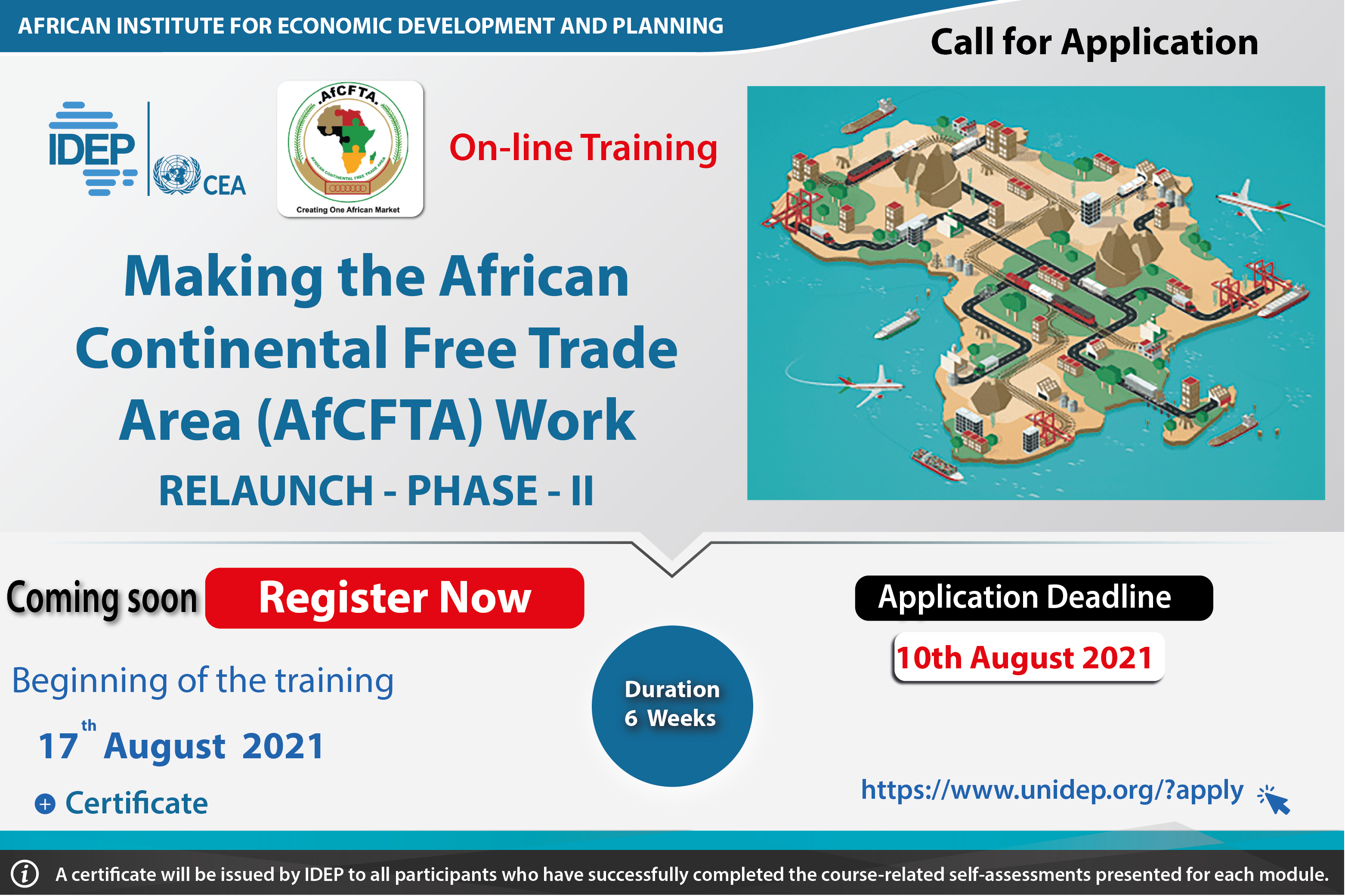Making the African Continental Free Trade Area (Afcfta) Work
PROGRAM RATIONALE
The AfCFTA Agreement is far from complete. So far, only negotiations on trade in goods and services, and on the settlement of dispute, have been concluded, with the remaining issues – investment, competition policy, intellectual property rights, and e-commerce – meant to be delved into in the next phase of the negotiations. Nevertheless, the launch of the AfCFTA marks an important milestone in Africa’s long and rather strenuous history of regional integration, going at least as far back as the Abuja Treaty of 1991, which envisaged an African Economic Community as the culmination of the integration process. A key objective of the AfCFTA is to create a single pan-African market for goods and services along with free movement of business persons and of capital.
The Trade Protocol of the AfCFTA Agreement was initially slated to come into effect on July 1, 2020 but this was delayed due to the ongoing COVID-19 pandemic. Trading under the Agreement finally began on January 1, 2021. In the meantime, the AfCFTA Secretariat became fully operational, with the inauguration of the Secretariat building in Accra in August 2020. As one of the key institutions envisaged by the AfCFTA Agreement, the Secretariat will play a critical role in its implementation and in promoting continent integration in Africa.
LEARNING OBJECTIVES
At the end of this online course, participants should be able to:
- Appreciate the role that regional integration could play in Africa’s economic growth and development;
- Understand the arduous process leading to the AfCFTA, and the way forward;
- Recall and understand key provisions of the AfCFTA agreement and its protocols;
- Critically assess what it would take for the AfCFTA to deliver on its promises;
- Evaluate the likely impacts of the AfCFTA — both in terms of gains and losses — on their respective country;
- Comprehend the impact of the COVID-19 pandemic on continental integration efforts and consider how the AfCFTA could provide opportunities for economies to build back better;
- Recommend, as part of a country AfCFTA strategy, measures that their government could take to leverage the opportunities arising from the AfCFTA and mitigate any short-term costs;
- Explain the fundamentals of the AfCFTA and its potential impacts to other interested parties.
